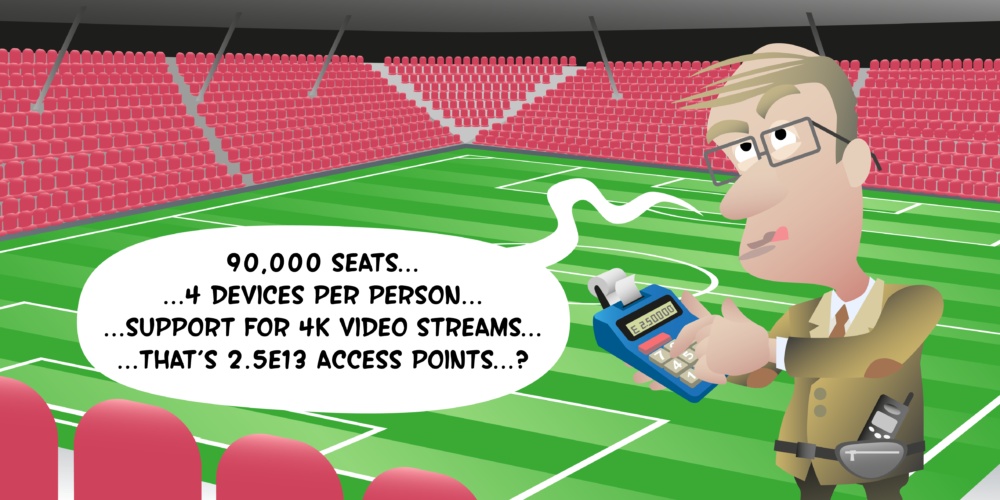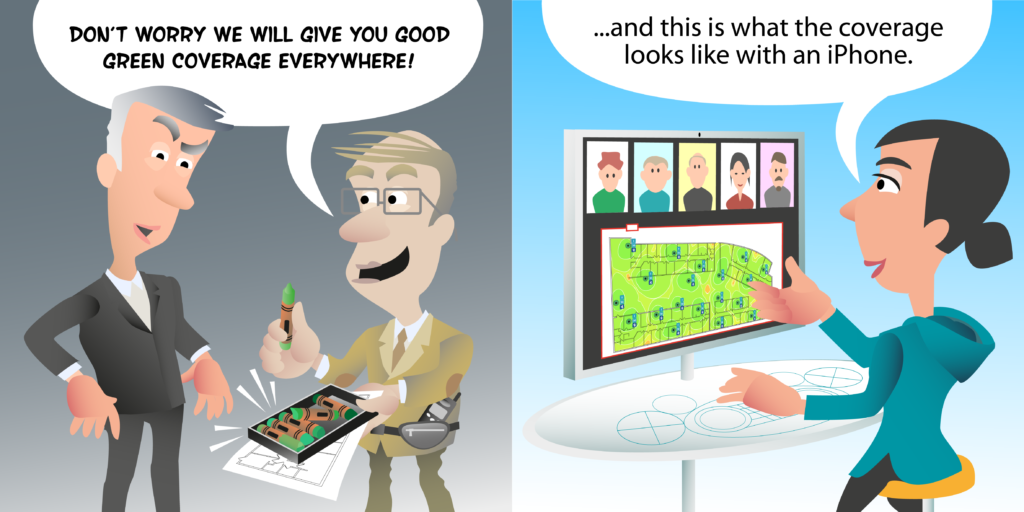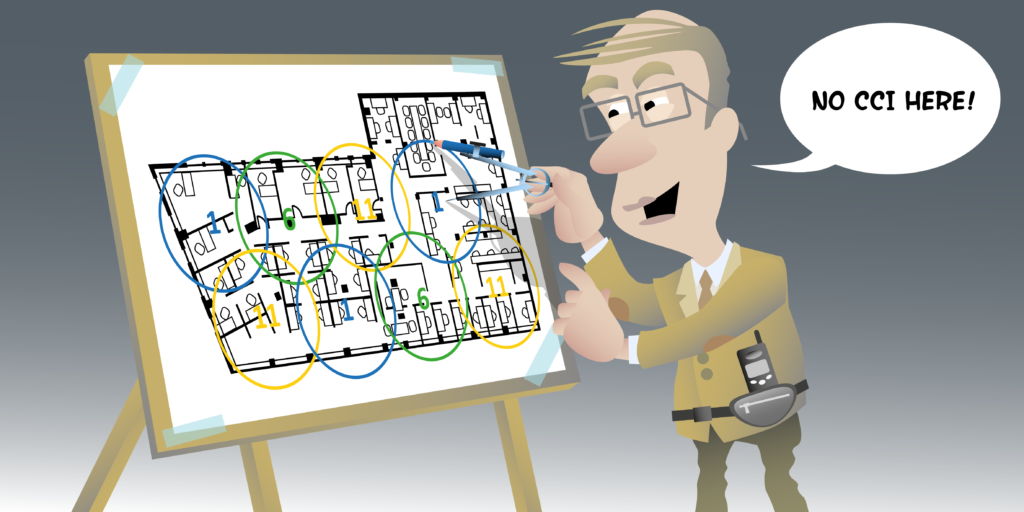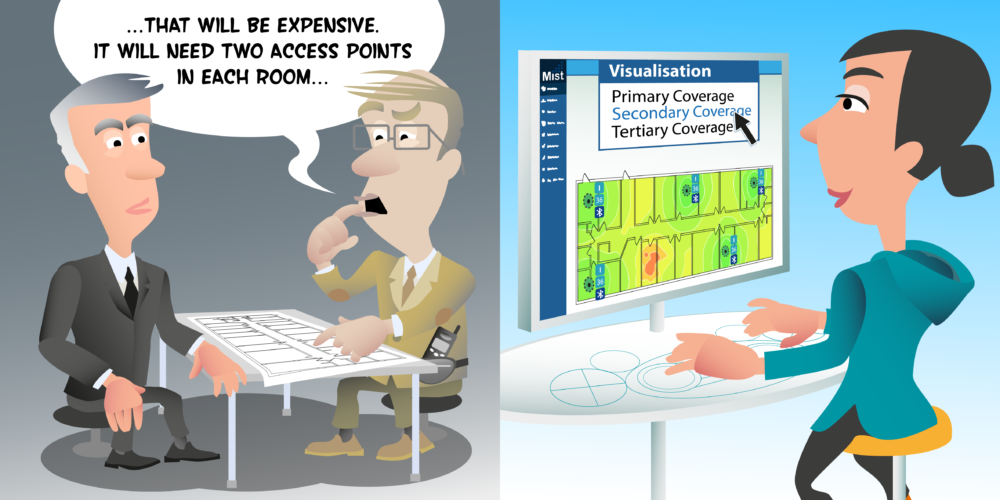
Hello, in this video we will be looking at designing our office based environment to meet our secondary signal requirement of minus 67 DBM. Secondary coverage is defined as a minimum signal strength required in each location from the second strongest access point. So in this example, the second strongest signal our client receives is a blue signal. So our second strongest signal is minus 62 DBM from the signal shown in blue.
So having designed our office for primary coverage, we’re next going to look at designing it for secondary coverage. And we do that by looking at our secondary coverage visualization. Now when I click the secondary coverage visualization, you can see that we actually already have a number of gray areas. There’s a number of areas where we’re failing secondary coverage. So what do we need to do? Well we’re clearly going to have to add some extra access points into this design. So let’s take a look at doing that now. I’m going to place some more access points. I can see that this is an area of concern here, so let’s place an access point in this room.
There’s also an area up here where we’re failing coverage, so I’m wondering if I can again place an additional one in. It looks like these rooms at the bottom are not covered, so I’m wondering if I can… My APs are quite close together, so I might see if I can get away with spacing them out a bit across this area to try and meet secondary coverage requirements. Looks like that’s where I’m going to have to be. Now I’ve placed some additional APs there and I’ve got pretty good secondary coverage, but I do still have some gray areas. There’s an area in the corner of this building here. There’s an area in the lift shafts where I’m struggling, and an area down at the bottom here where it’s a very small area and we don’t have secondary coverage.
So does it matter about these gray areas? Well, let’s look at this room at the top here. If I’m going to be in this room currently connected to our AP which is over here, then I’m going to have good signal strength to that AP while I’m in this room, I’m only going to want to roam as I move away from this AP, as I walk out of the room and start maybe walking down here. Well at that point I do have secondary coverage. So in the places where I’d want to roam, I actually have secondary coverage.
Let’s take outside the elevators. I don’t have secondary coverage, but I’m going to be connected to the AP which I’ve placed here to cover this corridor. Again, I’m only going to want to roam as I move away from that access point. So edges, corners are not as important if our primary reason for secondary coverage is to facilitate roaming. In fact, if I look at the percentage of my building which has got secondary coverage, we can see that I’m only actually failing in about just over 4% of my floor plan doesn’t have secondary coverage. Therefore 95% does have good secondary coverage, and actually 95% is really good. So it may well be I’m happy with this for secondary coverage.
If my reason for providing secondary coverage was for AP redundancy, the requirement was that in all areas if one AP fails, I have to have another AP that would work. In that case, then this gray area may concern me in its office and I may want to place another access point in the neighboring office here or actually inside the office. I may have to look at seeing if we can install an AP outside the lifts. But that would only be if AP redundancy is required. So again, understanding the requirements will help me to understand whether this coverage is good enough for the current secondary coverage. In my scenario for this office, the main reason for secondary coverage was for voice roaming, and I’m going to say 95% secondary coverage is absolutely fine. So do join us in the next video in this office design section where we’ll be looking at the other RF requirements for this office building.
Secondary coverage is the signal strength from the access point with the second strongest signal. The secondary coverage requirement will define the minimum secondary signal strength required in each location.
Ensuring good secondary coverage provides seamless roaming and access point redundancy
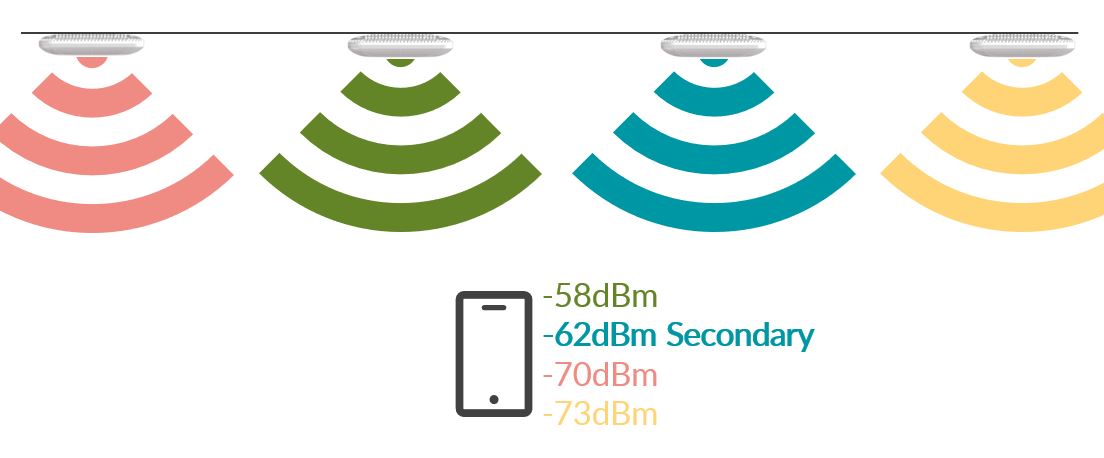
Next Videos



